Sitio conte panama Stock Photos and Images
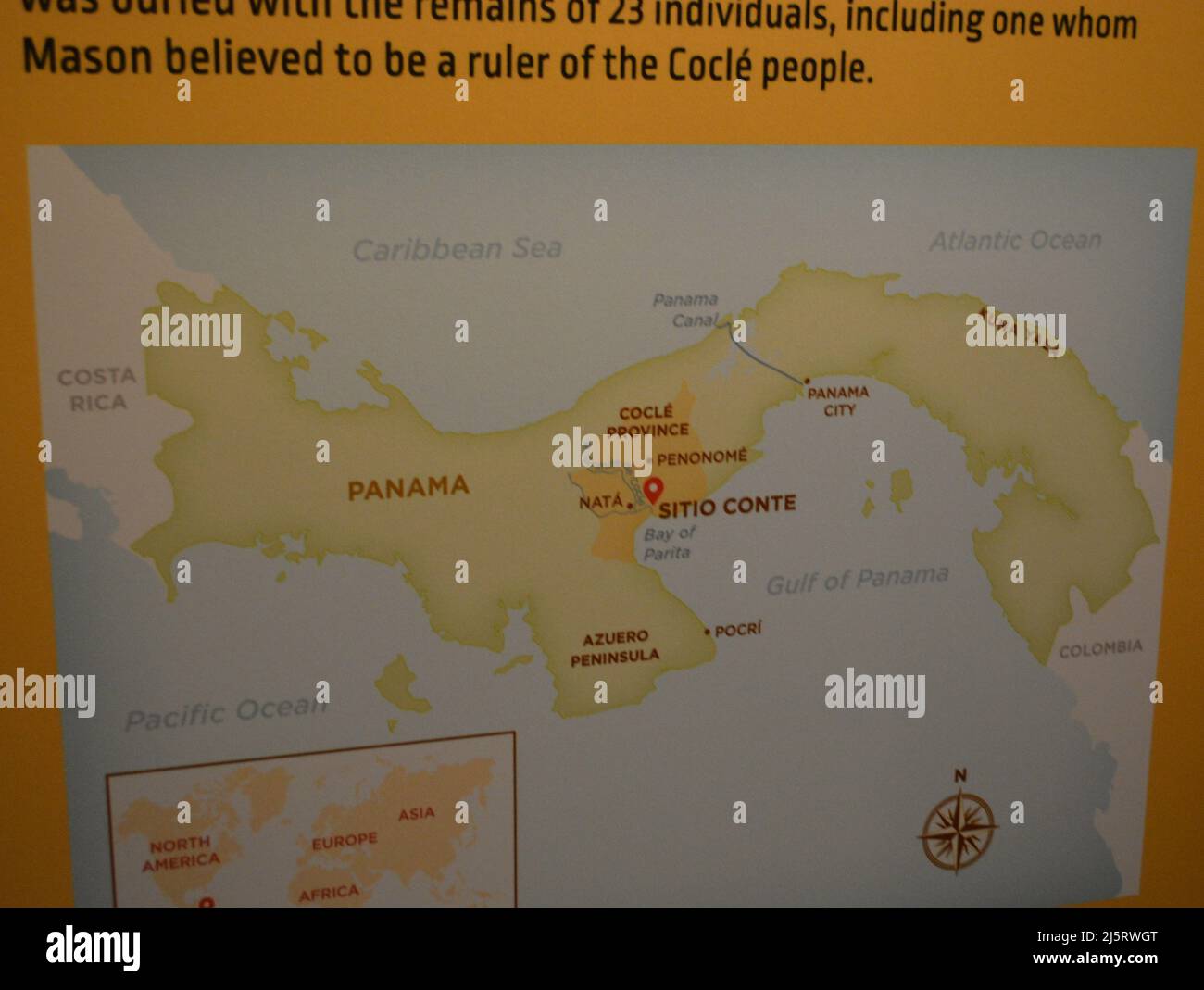 Temporary Exhibition of the Cocle Culture in the Penn University Museum. Map for location the Burial 11 in Sitio Conte Panama Stock Photohttps://www.alamy.com/image-license-details/?v=1https://www.alamy.com/temporary-exhibition-of-the-cocle-culture-in-the-penn-university-museum-map-for-location-the-burial-11-in-sitio-conte-panama-image468278184.html
Temporary Exhibition of the Cocle Culture in the Penn University Museum. Map for location the Burial 11 in Sitio Conte Panama Stock Photohttps://www.alamy.com/image-license-details/?v=1https://www.alamy.com/temporary-exhibition-of-the-cocle-culture-in-the-penn-university-museum-map-for-location-the-burial-11-in-sitio-conte-panama-image468278184.htmlRM2J5RWGT–Temporary Exhibition of the Cocle Culture in the Penn University Museum. Map for location the Burial 11 in Sitio Conte Panama
 Bracelet, c. 400-500. Central Panama, (Sitio Conte?), Conte Style, 5th century. Gold and shell; overall: 5.4 cm (2 1/8 in Stock Photohttps://www.alamy.com/image-license-details/?v=1https://www.alamy.com/bracelet-c-400-500-central-panama-sitio-conte-conte-style-5th-century-gold-and-shell-overall-54-cm-2-18-in-image240400145.html
Bracelet, c. 400-500. Central Panama, (Sitio Conte?), Conte Style, 5th century. Gold and shell; overall: 5.4 cm (2 1/8 in Stock Photohttps://www.alamy.com/image-license-details/?v=1https://www.alamy.com/bracelet-c-400-500-central-panama-sitio-conte-conte-style-5th-century-gold-and-shell-overall-54-cm-2-18-in-image240400145.htmlRMRY34RD–Bracelet, c. 400-500. Central Panama, (Sitio Conte?), Conte Style, 5th century. Gold and shell; overall: 5.4 cm (2 1/8 in
 Pectoral (Chest Plaque), 400-900. Harvard archaeologists excavated the eight ornaments in this case from several burials at Sitio Conte, a cemetery famous for its lavish graves of powerful chieftains. The young man buried in Grave 26 was such a chief. His status was stunningly memorialized by 21 human companions and 475 objects, many of them personal ornaments made of gold, including the large chest plaque (no. 2) and the rod-shaped ear ornament (no. 3) shown here. The creature on the chest plaque, found close to the chief’s body, has reptile claws and perhaps the head crest of an iguan Stock Photohttps://www.alamy.com/image-license-details/?v=1https://www.alamy.com/pectoral-chest-plaque-400-900-harvard-archaeologists-excavated-the-eight-ornaments-in-this-case-from-several-burials-at-sitio-conte-a-cemetery-famous-for-its-lavish-graves-of-powerful-chieftains-the-young-man-buried-in-grave-26-was-such-a-chief-his-status-was-stunningly-memorialized-by-21-human-companions-and-475-objects-many-of-them-personal-ornaments-made-of-gold-including-the-large-chest-plaque-no-2-and-the-rod-shaped-ear-ornament-no-3-shown-here-the-creature-on-the-chest-plaque-found-close-to-the-chiefx2019s-body-has-reptile-claws-and-perhaps-the-head-crest-of-an-iguan-image330111669.html
Pectoral (Chest Plaque), 400-900. Harvard archaeologists excavated the eight ornaments in this case from several burials at Sitio Conte, a cemetery famous for its lavish graves of powerful chieftains. The young man buried in Grave 26 was such a chief. His status was stunningly memorialized by 21 human companions and 475 objects, many of them personal ornaments made of gold, including the large chest plaque (no. 2) and the rod-shaped ear ornament (no. 3) shown here. The creature on the chest plaque, found close to the chief’s body, has reptile claws and perhaps the head crest of an iguan Stock Photohttps://www.alamy.com/image-license-details/?v=1https://www.alamy.com/pectoral-chest-plaque-400-900-harvard-archaeologists-excavated-the-eight-ornaments-in-this-case-from-several-burials-at-sitio-conte-a-cemetery-famous-for-its-lavish-graves-of-powerful-chieftains-the-young-man-buried-in-grave-26-was-such-a-chief-his-status-was-stunningly-memorialized-by-21-human-companions-and-475-objects-many-of-them-personal-ornaments-made-of-gold-including-the-large-chest-plaque-no-2-and-the-rod-shaped-ear-ornament-no-3-shown-here-the-creature-on-the-chest-plaque-found-close-to-the-chiefx2019s-body-has-reptile-claws-and-perhaps-the-head-crest-of-an-iguan-image330111669.htmlRM2A51TPD–Pectoral (Chest Plaque), 400-900. Harvard archaeologists excavated the eight ornaments in this case from several burials at Sitio Conte, a cemetery famous for its lavish graves of powerful chieftains. The young man buried in Grave 26 was such a chief. His status was stunningly memorialized by 21 human companions and 475 objects, many of them personal ornaments made of gold, including the large chest plaque (no. 2) and the rod-shaped ear ornament (no. 3) shown here. The creature on the chest plaque, found close to the chief’s body, has reptile claws and perhaps the head crest of an iguan
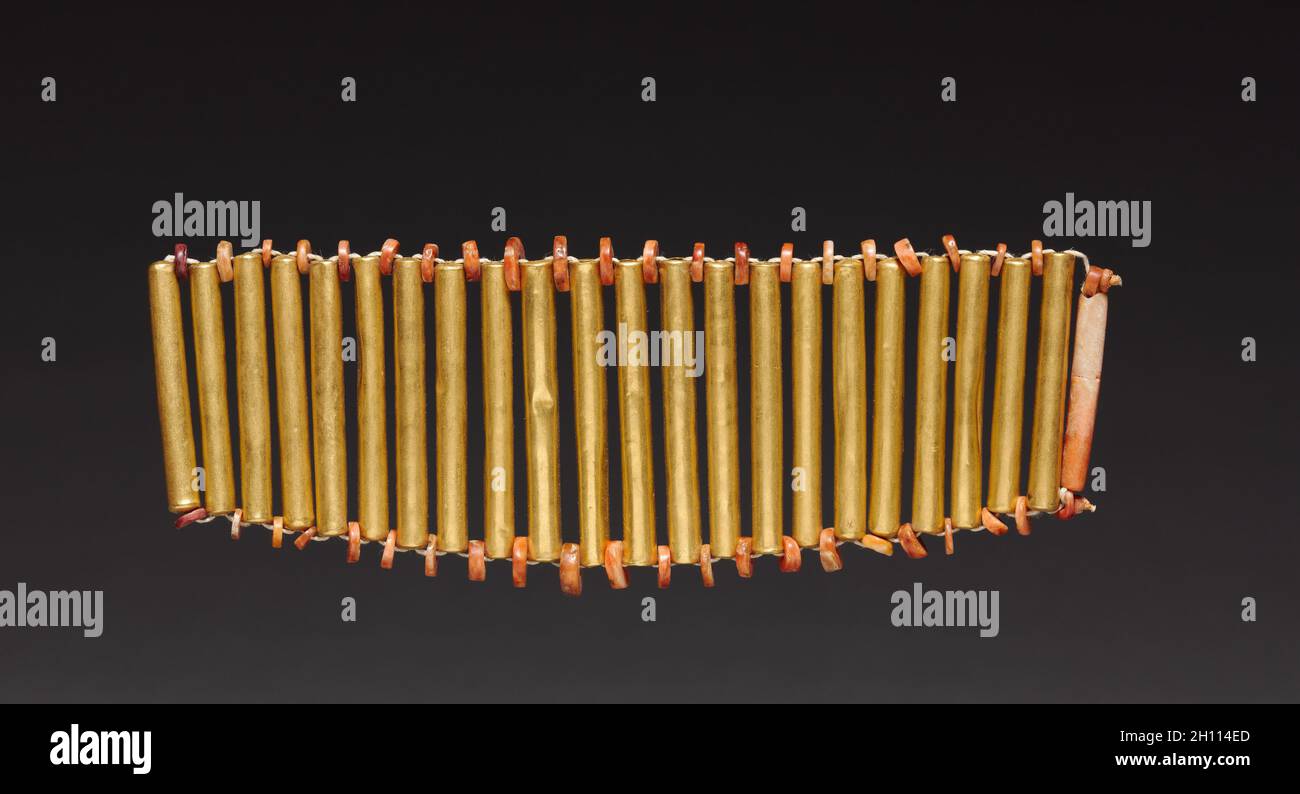 Bracelet, c. 400-500. Central Panama, (Sitio Conte?), Conte Style, 5th century. Gold and shell; overall: 5.4 cm (2 1/8 in.). Stock Photohttps://www.alamy.com/image-license-details/?v=1https://www.alamy.com/bracelet-c-400-500-central-panama-sitio-conte-conte-style-5th-century-gold-and-shell-overall-54-cm-2-18-in-image448109717.html
Bracelet, c. 400-500. Central Panama, (Sitio Conte?), Conte Style, 5th century. Gold and shell; overall: 5.4 cm (2 1/8 in.). Stock Photohttps://www.alamy.com/image-license-details/?v=1https://www.alamy.com/bracelet-c-400-500-central-panama-sitio-conte-conte-style-5th-century-gold-and-shell-overall-54-cm-2-18-in-image448109717.htmlRM2H114ED–Bracelet, c. 400-500. Central Panama, (Sitio Conte?), Conte Style, 5th century. Gold and shell; overall: 5.4 cm (2 1/8 in.).
 . Bulletin. Ethnology. '^^No.^'^sr"^^" PREHISTORY OF PANAMA VIEJO BIESE 31. Figure 9.—Red ware. Several vessels with unusual shapes for the area were recovered. They all were present, though infrequent, at Sitio Conte. Plate 10, a (left), shows a broken-rimmed gourd effigy vessel or fluted bowl of a somewhat finer paste and smoother finish than is usual. At Sitio Conte they occurred in both red and in smoked wares (Lothrop,. Please note that these images are extracted from scanned page images that may have been digitally enhanced for readability - coloration and appearance of these i Stock Photohttps://www.alamy.com/image-license-details/?v=1https://www.alamy.com/bulletin-ethnology-nosrquotquot-prehistory-of-panama-viejo-biese-31-figure-9red-ware-several-vessels-with-unusual-shapes-for-the-area-were-recovered-they-all-were-present-though-infrequent-at-sitio-conte-plate-10-a-left-shows-a-broken-rimmed-gourd-effigy-vessel-or-fluted-bowl-of-a-somewhat-finer-paste-and-smoother-finish-than-is-usual-at-sitio-conte-they-occurred-in-both-red-and-in-smoked-wares-lothrop-please-note-that-these-images-are-extracted-from-scanned-page-images-that-may-have-been-digitally-enhanced-for-readability-coloration-and-appearance-of-these-i-image234142528.html
. Bulletin. Ethnology. '^^No.^'^sr"^^" PREHISTORY OF PANAMA VIEJO BIESE 31. Figure 9.—Red ware. Several vessels with unusual shapes for the area were recovered. They all were present, though infrequent, at Sitio Conte. Plate 10, a (left), shows a broken-rimmed gourd effigy vessel or fluted bowl of a somewhat finer paste and smoother finish than is usual. At Sitio Conte they occurred in both red and in smoked wares (Lothrop,. Please note that these images are extracted from scanned page images that may have been digitally enhanced for readability - coloration and appearance of these i Stock Photohttps://www.alamy.com/image-license-details/?v=1https://www.alamy.com/bulletin-ethnology-nosrquotquot-prehistory-of-panama-viejo-biese-31-figure-9red-ware-several-vessels-with-unusual-shapes-for-the-area-were-recovered-they-all-were-present-though-infrequent-at-sitio-conte-plate-10-a-left-shows-a-broken-rimmed-gourd-effigy-vessel-or-fluted-bowl-of-a-somewhat-finer-paste-and-smoother-finish-than-is-usual-at-sitio-conte-they-occurred-in-both-red-and-in-smoked-wares-lothrop-please-note-that-these-images-are-extracted-from-scanned-page-images-that-may-have-been-digitally-enhanced-for-readability-coloration-and-appearance-of-these-i-image234142528.htmlRMRGX354–. Bulletin. Ethnology. '^^No.^'^sr"^^" PREHISTORY OF PANAMA VIEJO BIESE 31. Figure 9.—Red ware. Several vessels with unusual shapes for the area were recovered. They all were present, though infrequent, at Sitio Conte. Plate 10, a (left), shows a broken-rimmed gourd effigy vessel or fluted bowl of a somewhat finer paste and smoother finish than is usual. At Sitio Conte they occurred in both red and in smoked wares (Lothrop,. Please note that these images are extracted from scanned page images that may have been digitally enhanced for readability - coloration and appearance of these i
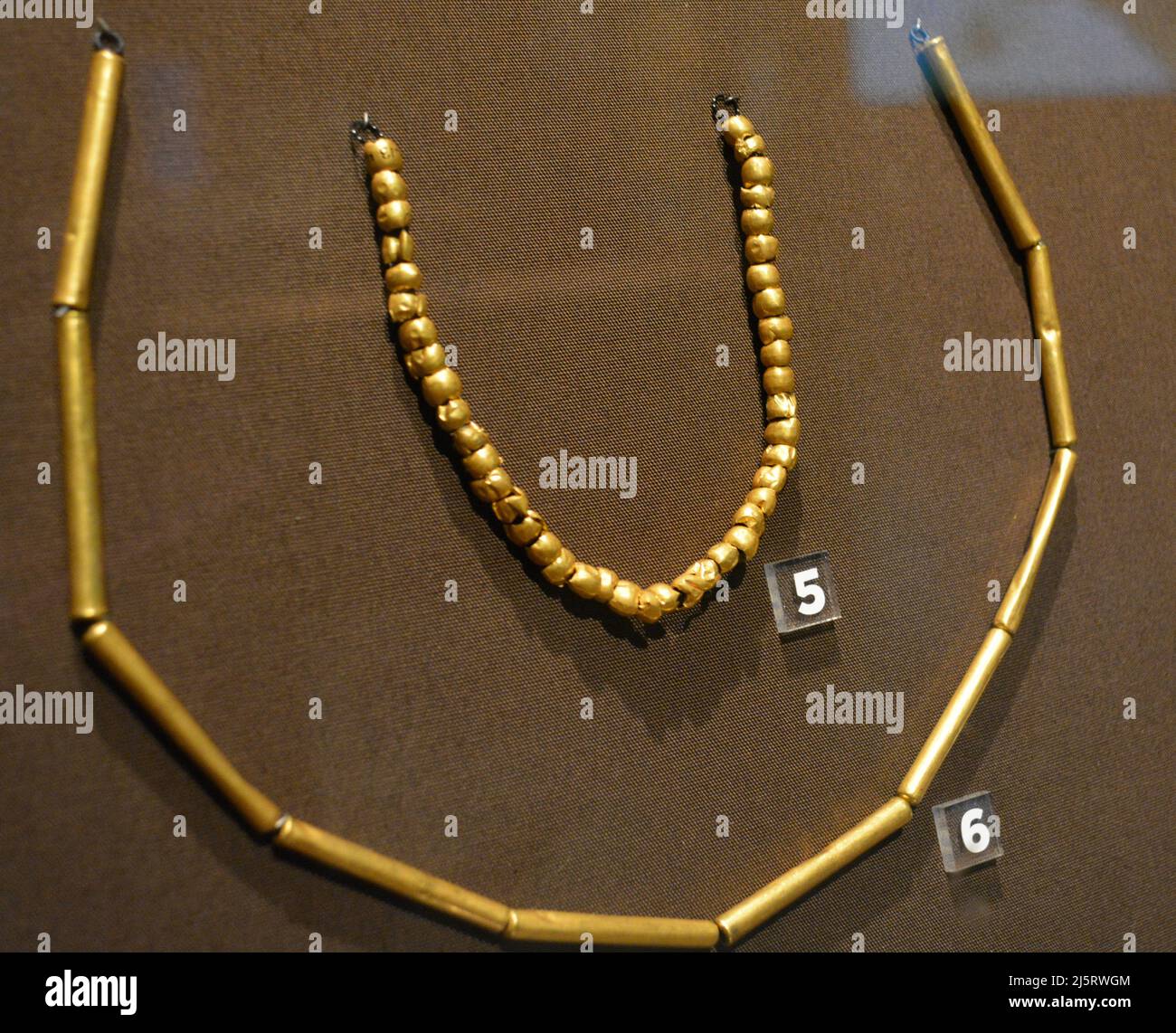 Temporary Exhibition of the Cocle Culture in the Penn University Museum. Metallic Pieces found in the Burial 11 of Sitio Conte Panama Stock Photohttps://www.alamy.com/image-license-details/?v=1https://www.alamy.com/temporary-exhibition-of-the-cocle-culture-in-the-penn-university-museum-metallic-pieces-found-in-the-burial-11-of-sitio-conte-panama-image468278180.html
Temporary Exhibition of the Cocle Culture in the Penn University Museum. Metallic Pieces found in the Burial 11 of Sitio Conte Panama Stock Photohttps://www.alamy.com/image-license-details/?v=1https://www.alamy.com/temporary-exhibition-of-the-cocle-culture-in-the-penn-university-museum-metallic-pieces-found-in-the-burial-11-of-sitio-conte-panama-image468278180.htmlRM2J5RWGM–Temporary Exhibition of the Cocle Culture in the Penn University Museum. Metallic Pieces found in the Burial 11 of Sitio Conte Panama
 Beads Strung as a Necklace, c. 400-500. Central Panama, (Sitio Conte?), Conte Style, 5th century. Gold and turquoise; overall: 33.8 cm (13 5/16 in Stock Photohttps://www.alamy.com/image-license-details/?v=1https://www.alamy.com/beads-strung-as-a-necklace-c-400-500-central-panama-sitio-conte-conte-style-5th-century-gold-and-turquoise-overall-338-cm-13-516-in-image240400151.html
Beads Strung as a Necklace, c. 400-500. Central Panama, (Sitio Conte?), Conte Style, 5th century. Gold and turquoise; overall: 33.8 cm (13 5/16 in Stock Photohttps://www.alamy.com/image-license-details/?v=1https://www.alamy.com/beads-strung-as-a-necklace-c-400-500-central-panama-sitio-conte-conte-style-5th-century-gold-and-turquoise-overall-338-cm-13-516-in-image240400151.htmlRMRY34RK–Beads Strung as a Necklace, c. 400-500. Central Panama, (Sitio Conte?), Conte Style, 5th century. Gold and turquoise; overall: 33.8 cm (13 5/16 in
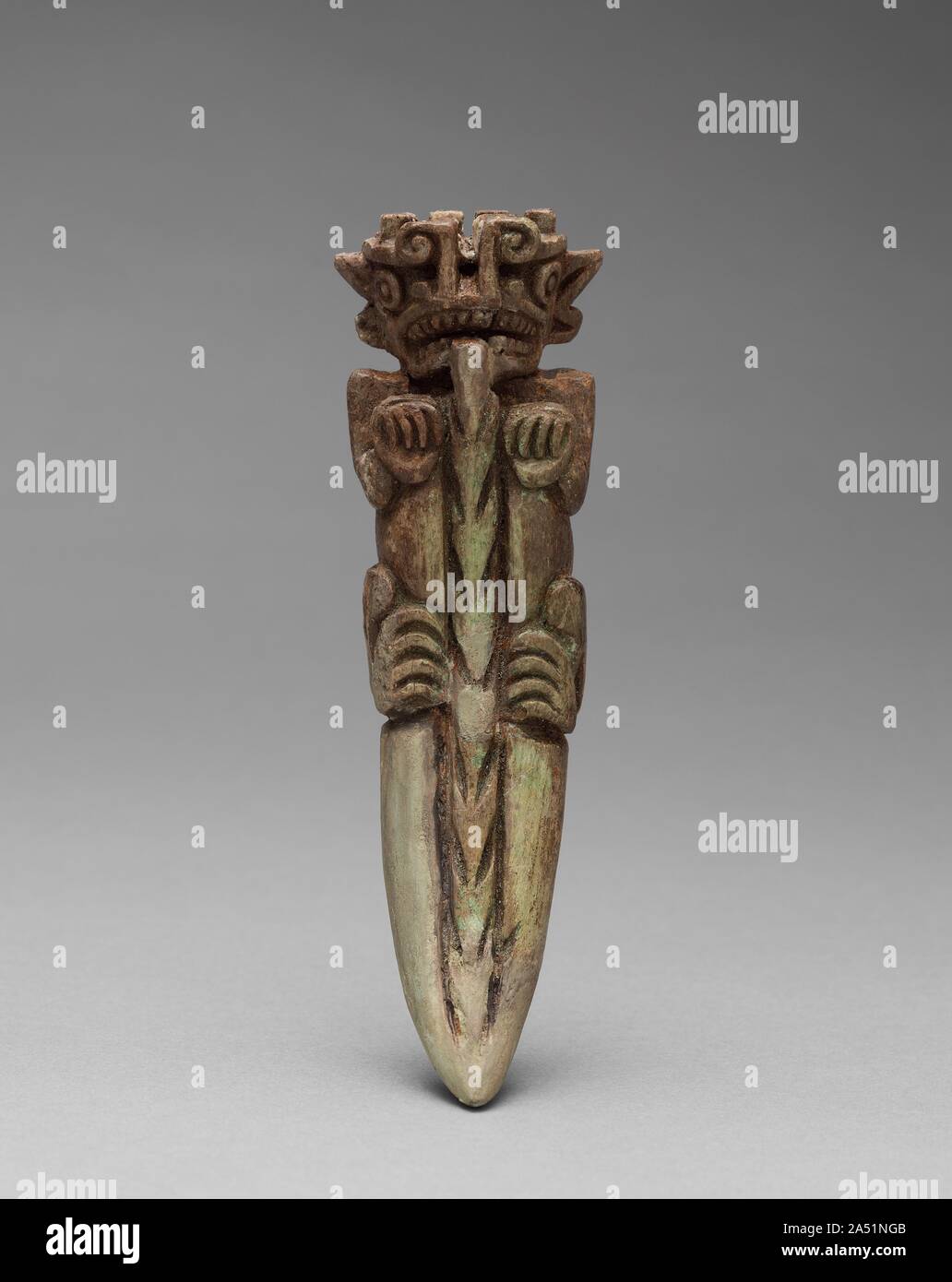 Ornament from Sitio Conte: Animal Pendant(?), c. 400-900. Harvard archaeologists excavated the eight ornaments in this case from several burials at Sitio Conte, a cemetery famous for its lavish graves of powerful chieftains. The young man buried in Grave 26 was such a chief. His status was stunningly memorialized by 21 human companions and 475 objects, many of them personal ornaments made of gold, including the large chest plaque (no. 2) and the rod-shaped ear ornament (no. 3) shown here. The creature on the chest plaque, found close to the chief’s body, has reptile claws and perhaps th Stock Photohttps://www.alamy.com/image-license-details/?v=1https://www.alamy.com/ornament-from-sitio-conte-animal-pendant-c-400-900-harvard-archaeologists-excavated-the-eight-ornaments-in-this-case-from-several-burials-at-sitio-conte-a-cemetery-famous-for-its-lavish-graves-of-powerful-chieftains-the-young-man-buried-in-grave-26-was-such-a-chief-his-status-was-stunningly-memorialized-by-21-human-companions-and-475-objects-many-of-them-personal-ornaments-made-of-gold-including-the-large-chest-plaque-no-2-and-the-rod-shaped-ear-ornament-no-3-shown-here-the-creature-on-the-chest-plaque-found-close-to-the-chiefx2019s-body-has-reptile-claws-and-perhaps-th-image330109147.html
Ornament from Sitio Conte: Animal Pendant(?), c. 400-900. Harvard archaeologists excavated the eight ornaments in this case from several burials at Sitio Conte, a cemetery famous for its lavish graves of powerful chieftains. The young man buried in Grave 26 was such a chief. His status was stunningly memorialized by 21 human companions and 475 objects, many of them personal ornaments made of gold, including the large chest plaque (no. 2) and the rod-shaped ear ornament (no. 3) shown here. The creature on the chest plaque, found close to the chief’s body, has reptile claws and perhaps th Stock Photohttps://www.alamy.com/image-license-details/?v=1https://www.alamy.com/ornament-from-sitio-conte-animal-pendant-c-400-900-harvard-archaeologists-excavated-the-eight-ornaments-in-this-case-from-several-burials-at-sitio-conte-a-cemetery-famous-for-its-lavish-graves-of-powerful-chieftains-the-young-man-buried-in-grave-26-was-such-a-chief-his-status-was-stunningly-memorialized-by-21-human-companions-and-475-objects-many-of-them-personal-ornaments-made-of-gold-including-the-large-chest-plaque-no-2-and-the-rod-shaped-ear-ornament-no-3-shown-here-the-creature-on-the-chest-plaque-found-close-to-the-chiefx2019s-body-has-reptile-claws-and-perhaps-th-image330109147.htmlRM2A51NGB–Ornament from Sitio Conte: Animal Pendant(?), c. 400-900. Harvard archaeologists excavated the eight ornaments in this case from several burials at Sitio Conte, a cemetery famous for its lavish graves of powerful chieftains. The young man buried in Grave 26 was such a chief. His status was stunningly memorialized by 21 human companions and 475 objects, many of them personal ornaments made of gold, including the large chest plaque (no. 2) and the rod-shaped ear ornament (no. 3) shown here. The creature on the chest plaque, found close to the chief’s body, has reptile claws and perhaps th
 Beads Strung as a Necklace, c. 400-500. Central Panama, (Sitio Conte?), Conte Style, 5th century. Gold and turquoise; overall: 33.8 cm (13 5/16 in.). Stock Photohttps://www.alamy.com/image-license-details/?v=1https://www.alamy.com/beads-strung-as-a-necklace-c-400-500-central-panama-sitio-conte-conte-style-5th-century-gold-and-turquoise-overall-338-cm-13-516-in-image448128414.html
Beads Strung as a Necklace, c. 400-500. Central Panama, (Sitio Conte?), Conte Style, 5th century. Gold and turquoise; overall: 33.8 cm (13 5/16 in.). Stock Photohttps://www.alamy.com/image-license-details/?v=1https://www.alamy.com/beads-strung-as-a-necklace-c-400-500-central-panama-sitio-conte-conte-style-5th-century-gold-and-turquoise-overall-338-cm-13-516-in-image448128414.htmlRM2H120A6–Beads Strung as a Necklace, c. 400-500. Central Panama, (Sitio Conte?), Conte Style, 5th century. Gold and turquoise; overall: 33.8 cm (13 5/16 in.).
 . Bulletin. Ethnology. b c Figure 4.—Incised brown ware pedestal cups. also present in larger versions, as depicted by plate 8, c (14 cm. high). Sherds from similar vessels, having diameters ranging from 12-14 cm., are shown in figure 3, c, d. Plate 8, c, illustrates an exceptionally fine incised sherd from a chalice-shaped vessel which would have a diameter of 16 cm. with 7 cm. outsloping side walls. The rim elabora- tion is similar to that found on sherds among the scattered debris at Sitio Conte (Lothrop, 1942, fig. 345). STONEWORK There is a general paucity of stonework in Panama Viejo. On Stock Photohttps://www.alamy.com/image-license-details/?v=1https://www.alamy.com/bulletin-ethnology-b-c-figure-4incised-brown-ware-pedestal-cups-also-present-in-larger-versions-as-depicted-by-plate-8-c-14-cm-high-sherds-from-similar-vessels-having-diameters-ranging-from-12-14-cm-are-shown-in-figure-3-c-d-plate-8-c-illustrates-an-exceptionally-fine-incised-sherd-from-a-chalice-shaped-vessel-which-would-have-a-diameter-of-16-cm-with-7-cm-outsloping-side-walls-the-rim-elabora-tion-is-similar-to-that-found-on-sherds-among-the-scattered-debris-at-sitio-conte-lothrop-1942-fig-345-stonework-there-is-a-general-paucity-of-stonework-in-panama-viejo-on-image234142804.html
. Bulletin. Ethnology. b c Figure 4.—Incised brown ware pedestal cups. also present in larger versions, as depicted by plate 8, c (14 cm. high). Sherds from similar vessels, having diameters ranging from 12-14 cm., are shown in figure 3, c, d. Plate 8, c, illustrates an exceptionally fine incised sherd from a chalice-shaped vessel which would have a diameter of 16 cm. with 7 cm. outsloping side walls. The rim elabora- tion is similar to that found on sherds among the scattered debris at Sitio Conte (Lothrop, 1942, fig. 345). STONEWORK There is a general paucity of stonework in Panama Viejo. On Stock Photohttps://www.alamy.com/image-license-details/?v=1https://www.alamy.com/bulletin-ethnology-b-c-figure-4incised-brown-ware-pedestal-cups-also-present-in-larger-versions-as-depicted-by-plate-8-c-14-cm-high-sherds-from-similar-vessels-having-diameters-ranging-from-12-14-cm-are-shown-in-figure-3-c-d-plate-8-c-illustrates-an-exceptionally-fine-incised-sherd-from-a-chalice-shaped-vessel-which-would-have-a-diameter-of-16-cm-with-7-cm-outsloping-side-walls-the-rim-elabora-tion-is-similar-to-that-found-on-sherds-among-the-scattered-debris-at-sitio-conte-lothrop-1942-fig-345-stonework-there-is-a-general-paucity-of-stonework-in-panama-viejo-on-image234142804.htmlRMRGX3F0–. Bulletin. Ethnology. b c Figure 4.—Incised brown ware pedestal cups. also present in larger versions, as depicted by plate 8, c (14 cm. high). Sherds from similar vessels, having diameters ranging from 12-14 cm., are shown in figure 3, c, d. Plate 8, c, illustrates an exceptionally fine incised sherd from a chalice-shaped vessel which would have a diameter of 16 cm. with 7 cm. outsloping side walls. The rim elabora- tion is similar to that found on sherds among the scattered debris at Sitio Conte (Lothrop, 1942, fig. 345). STONEWORK There is a general paucity of stonework in Panama Viejo. On
 Temporary Exhibition of the Cocle Culture in the Penn University Museum. Reconstruction of the Burial 11 of Sitio Conte Panama Stock Photohttps://www.alamy.com/image-license-details/?v=1https://www.alamy.com/temporary-exhibition-of-the-cocle-culture-in-the-penn-university-museum-reconstruction-of-the-burial-11-of-sitio-conte-panama-image468108174.html
Temporary Exhibition of the Cocle Culture in the Penn University Museum. Reconstruction of the Burial 11 of Sitio Conte Panama Stock Photohttps://www.alamy.com/image-license-details/?v=1https://www.alamy.com/temporary-exhibition-of-the-cocle-culture-in-the-penn-university-museum-reconstruction-of-the-burial-11-of-sitio-conte-panama-image468108174.htmlRM2J5G4N2–Temporary Exhibition of the Cocle Culture in the Penn University Museum. Reconstruction of the Burial 11 of Sitio Conte Panama
 Ornament from Sitio Conte: Small Plaque, c. 400-500. Panama, Conte style, 5th - 10th century. Hammered gold; overall: 9.3 x 10 cm (3 11/16 x 3 15/16 in Stock Photohttps://www.alamy.com/image-license-details/?v=1https://www.alamy.com/ornament-from-sitio-conte-small-plaque-c-400-500-panama-conte-style-5th-10th-century-hammered-gold-overall-93-x-10-cm-3-1116-x-3-1516-in-image240400147.html
Ornament from Sitio Conte: Small Plaque, c. 400-500. Panama, Conte style, 5th - 10th century. Hammered gold; overall: 9.3 x 10 cm (3 11/16 x 3 15/16 in Stock Photohttps://www.alamy.com/image-license-details/?v=1https://www.alamy.com/ornament-from-sitio-conte-small-plaque-c-400-500-panama-conte-style-5th-10th-century-hammered-gold-overall-93-x-10-cm-3-1116-x-3-1516-in-image240400147.htmlRMRY34RF–Ornament from Sitio Conte: Small Plaque, c. 400-500. Panama, Conte style, 5th - 10th century. Hammered gold; overall: 9.3 x 10 cm (3 11/16 x 3 15/16 in
 Ear Spool, c. 400-900. Harvard archaeologists excavated the eight ornaments in this case from several burials at Sitio Conte, a cemetery famous for its lavish graves of powerful chieftains. The young man buried in Grave 26 was such a chief. His status was stunningly memorialized by 21 human companions and 475 objects, many of them personal ornaments made of gold, including the large chest plaque (no. 2) and the rod-shaped ear ornament (no. 3) shown here. The creature on the chest plaque, found close to the chief’s body, has reptile claws and perhaps the head crest of an iguana. Its mean Stock Photohttps://www.alamy.com/image-license-details/?v=1https://www.alamy.com/ear-spool-c-400-900-harvard-archaeologists-excavated-the-eight-ornaments-in-this-case-from-several-burials-at-sitio-conte-a-cemetery-famous-for-its-lavish-graves-of-powerful-chieftains-the-young-man-buried-in-grave-26-was-such-a-chief-his-status-was-stunningly-memorialized-by-21-human-companions-and-475-objects-many-of-them-personal-ornaments-made-of-gold-including-the-large-chest-plaque-no-2-and-the-rod-shaped-ear-ornament-no-3-shown-here-the-creature-on-the-chest-plaque-found-close-to-the-chiefx2019s-body-has-reptile-claws-and-perhaps-the-head-crest-of-an-iguana-its-mean-image330086662.html
Ear Spool, c. 400-900. Harvard archaeologists excavated the eight ornaments in this case from several burials at Sitio Conte, a cemetery famous for its lavish graves of powerful chieftains. The young man buried in Grave 26 was such a chief. His status was stunningly memorialized by 21 human companions and 475 objects, many of them personal ornaments made of gold, including the large chest plaque (no. 2) and the rod-shaped ear ornament (no. 3) shown here. The creature on the chest plaque, found close to the chief’s body, has reptile claws and perhaps the head crest of an iguana. Its mean Stock Photohttps://www.alamy.com/image-license-details/?v=1https://www.alamy.com/ear-spool-c-400-900-harvard-archaeologists-excavated-the-eight-ornaments-in-this-case-from-several-burials-at-sitio-conte-a-cemetery-famous-for-its-lavish-graves-of-powerful-chieftains-the-young-man-buried-in-grave-26-was-such-a-chief-his-status-was-stunningly-memorialized-by-21-human-companions-and-475-objects-many-of-them-personal-ornaments-made-of-gold-including-the-large-chest-plaque-no-2-and-the-rod-shaped-ear-ornament-no-3-shown-here-the-creature-on-the-chest-plaque-found-close-to-the-chiefx2019s-body-has-reptile-claws-and-perhaps-the-head-crest-of-an-iguana-its-mean-image330086662.htmlRM2A50MWA–Ear Spool, c. 400-900. Harvard archaeologists excavated the eight ornaments in this case from several burials at Sitio Conte, a cemetery famous for its lavish graves of powerful chieftains. The young man buried in Grave 26 was such a chief. His status was stunningly memorialized by 21 human companions and 475 objects, many of them personal ornaments made of gold, including the large chest plaque (no. 2) and the rod-shaped ear ornament (no. 3) shown here. The creature on the chest plaque, found close to the chief’s body, has reptile claws and perhaps the head crest of an iguana. Its mean
 Double Crocodile Vessel, c. 400-900. Central Panama, (Sitio Conte?), Conte Style, 5th-10th Century. Hammered and embossed gold; overall: 23.1 x 6.8 x 4.6 cm (9 1/8 x 2 11/16 x 1 13/16 in.). Stock Photohttps://www.alamy.com/image-license-details/?v=1https://www.alamy.com/double-crocodile-vessel-c-400-900-central-panama-sitio-conte-conte-style-5th-10th-century-hammered-and-embossed-gold-overall-231-x-68-x-46-cm-9-18-x-2-1116-x-1-1316-in-image448126970.html
Double Crocodile Vessel, c. 400-900. Central Panama, (Sitio Conte?), Conte Style, 5th-10th Century. Hammered and embossed gold; overall: 23.1 x 6.8 x 4.6 cm (9 1/8 x 2 11/16 x 1 13/16 in.). Stock Photohttps://www.alamy.com/image-license-details/?v=1https://www.alamy.com/double-crocodile-vessel-c-400-900-central-panama-sitio-conte-conte-style-5th-10th-century-hammered-and-embossed-gold-overall-231-x-68-x-46-cm-9-18-x-2-1116-x-1-1316-in-image448126970.htmlRM2H11XEJ–Double Crocodile Vessel, c. 400-900. Central Panama, (Sitio Conte?), Conte Style, 5th-10th Century. Hammered and embossed gold; overall: 23.1 x 6.8 x 4.6 cm (9 1/8 x 2 11/16 x 1 13/16 in.).
 Temporary Exhibition of the Cocle Culture in the Penn University Museum. Metallic Pieces found in the Burial 11 of Sitio Conte Panama Stock Photohttps://www.alamy.com/image-license-details/?v=1https://www.alamy.com/temporary-exhibition-of-the-cocle-culture-in-the-penn-university-museum-metallic-pieces-found-in-the-burial-11-of-sitio-conte-panama-image468108184.html
Temporary Exhibition of the Cocle Culture in the Penn University Museum. Metallic Pieces found in the Burial 11 of Sitio Conte Panama Stock Photohttps://www.alamy.com/image-license-details/?v=1https://www.alamy.com/temporary-exhibition-of-the-cocle-culture-in-the-penn-university-museum-metallic-pieces-found-in-the-burial-11-of-sitio-conte-panama-image468108184.htmlRM2J5G4NC–Temporary Exhibition of the Cocle Culture in the Penn University Museum. Metallic Pieces found in the Burial 11 of Sitio Conte Panama
 Ornament from Sitio Conte: Animal Pendant(?), c. 400-900. Panama, Conte style, 5th - 10th century. Manatee bone; overall: 4.3 x 5.5 cm (1 11/16 x 2 3/16 in Stock Photohttps://www.alamy.com/image-license-details/?v=1https://www.alamy.com/ornament-from-sitio-conte-animal-pendant-c-400-900-panama-conte-style-5th-10th-century-manatee-bone-overall-43-x-55-cm-1-1116-x-2-316-in-image240400269.html
Ornament from Sitio Conte: Animal Pendant(?), c. 400-900. Panama, Conte style, 5th - 10th century. Manatee bone; overall: 4.3 x 5.5 cm (1 11/16 x 2 3/16 in Stock Photohttps://www.alamy.com/image-license-details/?v=1https://www.alamy.com/ornament-from-sitio-conte-animal-pendant-c-400-900-panama-conte-style-5th-10th-century-manatee-bone-overall-43-x-55-cm-1-1116-x-2-316-in-image240400269.htmlRMRY34YW–Ornament from Sitio Conte: Animal Pendant(?), c. 400-900. Panama, Conte style, 5th - 10th century. Manatee bone; overall: 4.3 x 5.5 cm (1 11/16 x 2 3/16 in
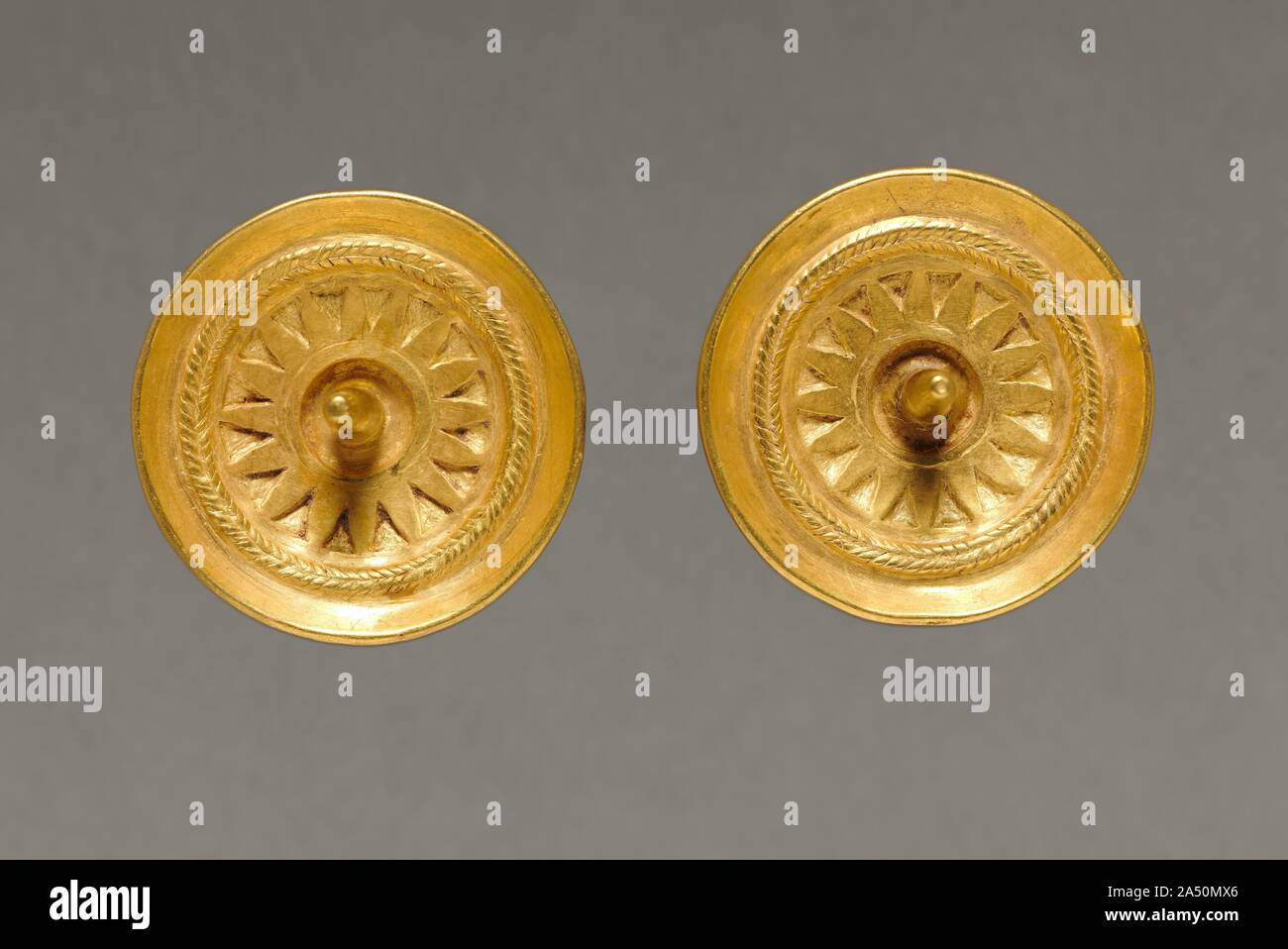 Ear Spool, c. 400-900. Harvard archaeologists excavated the eight ornaments in this case from several burials at Sitio Conte, a cemetery famous for its lavish graves of powerful chieftains. The young man buried in Grave 26 was such a chief. His status was stunningly memorialized by 21 human companions and 475 objects, many of them personal ornaments made of gold, including the large chest plaque (no. 2) and the rod-shaped ear ornament (no. 3) shown here. The creature on the chest plaque, found close to the chief’s body, has reptile claws and perhaps the head crest of an iguana. Its mean Stock Photohttps://www.alamy.com/image-license-details/?v=1https://www.alamy.com/ear-spool-c-400-900-harvard-archaeologists-excavated-the-eight-ornaments-in-this-case-from-several-burials-at-sitio-conte-a-cemetery-famous-for-its-lavish-graves-of-powerful-chieftains-the-young-man-buried-in-grave-26-was-such-a-chief-his-status-was-stunningly-memorialized-by-21-human-companions-and-475-objects-many-of-them-personal-ornaments-made-of-gold-including-the-large-chest-plaque-no-2-and-the-rod-shaped-ear-ornament-no-3-shown-here-the-creature-on-the-chest-plaque-found-close-to-the-chiefx2019s-body-has-reptile-claws-and-perhaps-the-head-crest-of-an-iguana-its-mean-image330086686.html
Ear Spool, c. 400-900. Harvard archaeologists excavated the eight ornaments in this case from several burials at Sitio Conte, a cemetery famous for its lavish graves of powerful chieftains. The young man buried in Grave 26 was such a chief. His status was stunningly memorialized by 21 human companions and 475 objects, many of them personal ornaments made of gold, including the large chest plaque (no. 2) and the rod-shaped ear ornament (no. 3) shown here. The creature on the chest plaque, found close to the chief’s body, has reptile claws and perhaps the head crest of an iguana. Its mean Stock Photohttps://www.alamy.com/image-license-details/?v=1https://www.alamy.com/ear-spool-c-400-900-harvard-archaeologists-excavated-the-eight-ornaments-in-this-case-from-several-burials-at-sitio-conte-a-cemetery-famous-for-its-lavish-graves-of-powerful-chieftains-the-young-man-buried-in-grave-26-was-such-a-chief-his-status-was-stunningly-memorialized-by-21-human-companions-and-475-objects-many-of-them-personal-ornaments-made-of-gold-including-the-large-chest-plaque-no-2-and-the-rod-shaped-ear-ornament-no-3-shown-here-the-creature-on-the-chest-plaque-found-close-to-the-chiefx2019s-body-has-reptile-claws-and-perhaps-the-head-crest-of-an-iguana-its-mean-image330086686.htmlRM2A50MX6–Ear Spool, c. 400-900. Harvard archaeologists excavated the eight ornaments in this case from several burials at Sitio Conte, a cemetery famous for its lavish graves of powerful chieftains. The young man buried in Grave 26 was such a chief. His status was stunningly memorialized by 21 human companions and 475 objects, many of them personal ornaments made of gold, including the large chest plaque (no. 2) and the rod-shaped ear ornament (no. 3) shown here. The creature on the chest plaque, found close to the chief’s body, has reptile claws and perhaps the head crest of an iguana. Its mean
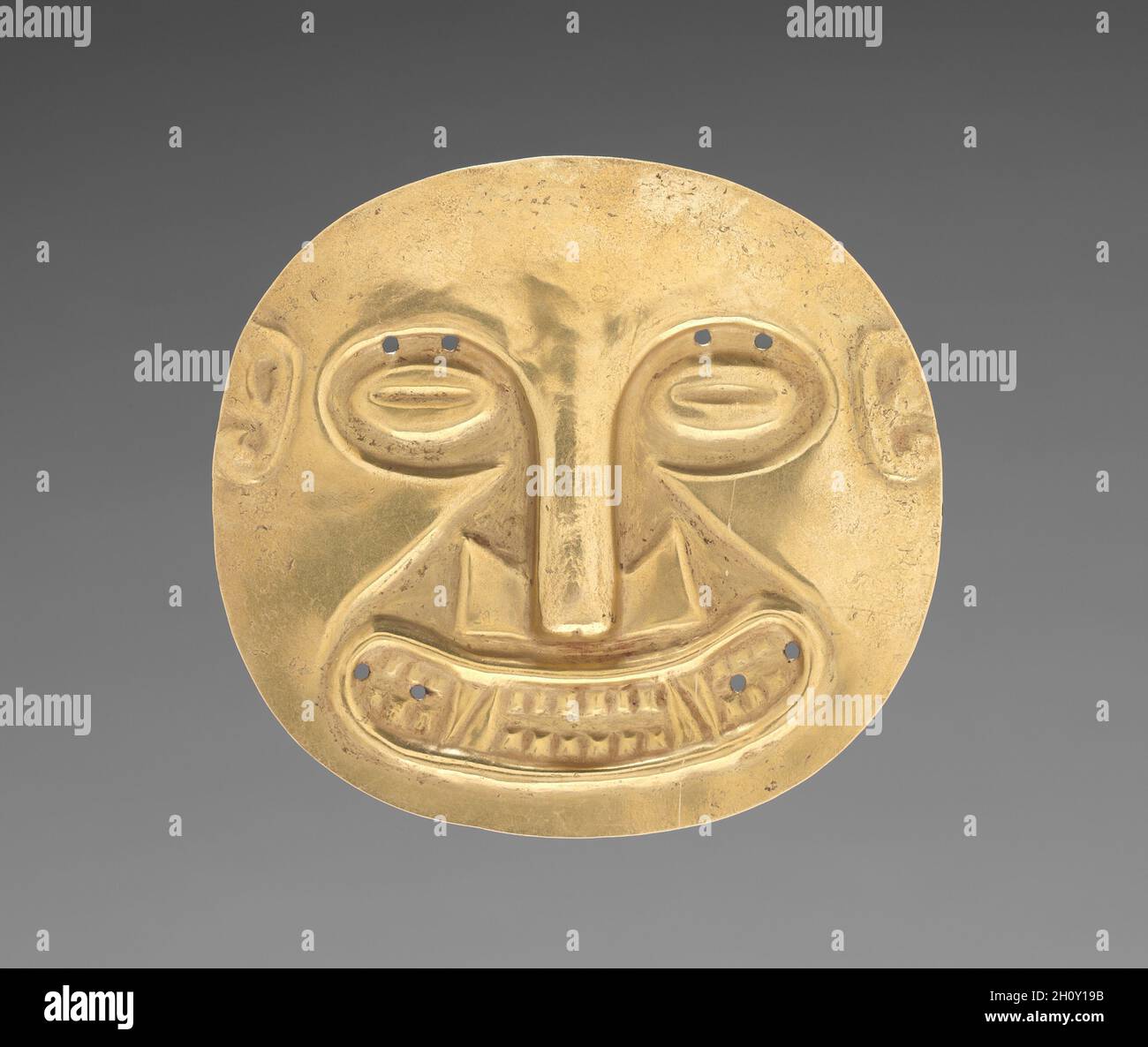 Ornament from Sitio Conte: Small Plaque, c. 400-500. Panama, Conte style, 5th - 10th century. Hammered gold; overall: 9.3 x 10 cm (3 11/16 x 3 15/16 in.). Harvard archaeologists excavated this ornament from Grave 32 at Sitio Conte, a cemetery famous for its lavish graves of powerful chieftains. The warm gleam of gold linked rulers with the sun’s creative force. Stock Photohttps://www.alamy.com/image-license-details/?v=1https://www.alamy.com/ornament-from-sitio-conte-small-plaque-c-400-500-panama-conte-style-5th-10th-century-hammered-gold-overall-93-x-10-cm-3-1116-x-3-1516-in-harvard-archaeologists-excavated-this-ornament-from-grave-32-at-sitio-conte-a-cemetery-famous-for-its-lavish-graves-of-powerful-chieftains-the-warm-gleam-of-gold-linked-rulers-with-the-suns-creative-force-image448063319.html
Ornament from Sitio Conte: Small Plaque, c. 400-500. Panama, Conte style, 5th - 10th century. Hammered gold; overall: 9.3 x 10 cm (3 11/16 x 3 15/16 in.). Harvard archaeologists excavated this ornament from Grave 32 at Sitio Conte, a cemetery famous for its lavish graves of powerful chieftains. The warm gleam of gold linked rulers with the sun’s creative force. Stock Photohttps://www.alamy.com/image-license-details/?v=1https://www.alamy.com/ornament-from-sitio-conte-small-plaque-c-400-500-panama-conte-style-5th-10th-century-hammered-gold-overall-93-x-10-cm-3-1116-x-3-1516-in-harvard-archaeologists-excavated-this-ornament-from-grave-32-at-sitio-conte-a-cemetery-famous-for-its-lavish-graves-of-powerful-chieftains-the-warm-gleam-of-gold-linked-rulers-with-the-suns-creative-force-image448063319.htmlRM2H0Y19B–Ornament from Sitio Conte: Small Plaque, c. 400-500. Panama, Conte style, 5th - 10th century. Hammered gold; overall: 9.3 x 10 cm (3 11/16 x 3 15/16 in.). Harvard archaeologists excavated this ornament from Grave 32 at Sitio Conte, a cemetery famous for its lavish graves of powerful chieftains. The warm gleam of gold linked rulers with the sun’s creative force.
 Temporary Exhibition of the Cocle Culture in the Penn University Museum. Metallic Pieces found in the Burial 11 of Sitio Conte Panama Stock Photohttps://www.alamy.com/image-license-details/?v=1https://www.alamy.com/temporary-exhibition-of-the-cocle-culture-in-the-penn-university-museum-metallic-pieces-found-in-the-burial-11-of-sitio-conte-panama-image468108115.html
Temporary Exhibition of the Cocle Culture in the Penn University Museum. Metallic Pieces found in the Burial 11 of Sitio Conte Panama Stock Photohttps://www.alamy.com/image-license-details/?v=1https://www.alamy.com/temporary-exhibition-of-the-cocle-culture-in-the-penn-university-museum-metallic-pieces-found-in-the-burial-11-of-sitio-conte-panama-image468108115.htmlRM2J5G4JY–Temporary Exhibition of the Cocle Culture in the Penn University Museum. Metallic Pieces found in the Burial 11 of Sitio Conte Panama
 Double Crocodile Vessel, c. 400-900. Central Panama, (Sitio Conte?), Conte Style, 5th-10th Century. Hammered and embossed gold; overall: 23.1 x 6.8 x 4.6 cm (9 1/8 x 2 11/16 x 1 13/16 in Stock Photohttps://www.alamy.com/image-license-details/?v=1https://www.alamy.com/double-crocodile-vessel-c-400-900-central-panama-sitio-conte-conte-style-5th-10th-century-hammered-and-embossed-gold-overall-231-x-68-x-46-cm-9-18-x-2-1116-x-1-1316-in-image240420844.html
Double Crocodile Vessel, c. 400-900. Central Panama, (Sitio Conte?), Conte Style, 5th-10th Century. Hammered and embossed gold; overall: 23.1 x 6.8 x 4.6 cm (9 1/8 x 2 11/16 x 1 13/16 in Stock Photohttps://www.alamy.com/image-license-details/?v=1https://www.alamy.com/double-crocodile-vessel-c-400-900-central-panama-sitio-conte-conte-style-5th-10th-century-hammered-and-embossed-gold-overall-231-x-68-x-46-cm-9-18-x-2-1116-x-1-1316-in-image240420844.htmlRMRY436M–Double Crocodile Vessel, c. 400-900. Central Panama, (Sitio Conte?), Conte Style, 5th-10th Century. Hammered and embossed gold; overall: 23.1 x 6.8 x 4.6 cm (9 1/8 x 2 11/16 x 1 13/16 in
 Ear Rod, c. 700-900. Harvard archaeologists excavated the eight ornaments in this case from several burials at Sitio Conte, a cemetery famous for its lavish graves of powerful chieftains. The young man buried in Grave 26 was such a chief. His status was stunningly memorialized by 21 human companions and 475 objects, many of them personal ornaments made of gold, including the large chest plaque (no. 2) and the rod-shaped ear ornament (no. 3) shown here. The creature on the chest plaque, found close to the chief’s body, has reptile claws and perhaps the head crest of an iguana. Its meanin Stock Photohttps://www.alamy.com/image-license-details/?v=1https://www.alamy.com/ear-rod-c-700-900-harvard-archaeologists-excavated-the-eight-ornaments-in-this-case-from-several-burials-at-sitio-conte-a-cemetery-famous-for-its-lavish-graves-of-powerful-chieftains-the-young-man-buried-in-grave-26-was-such-a-chief-his-status-was-stunningly-memorialized-by-21-human-companions-and-475-objects-many-of-them-personal-ornaments-made-of-gold-including-the-large-chest-plaque-no-2-and-the-rod-shaped-ear-ornament-no-3-shown-here-the-creature-on-the-chest-plaque-found-close-to-the-chiefx2019s-body-has-reptile-claws-and-perhaps-the-head-crest-of-an-iguana-its-meanin-image330086667.html
Ear Rod, c. 700-900. Harvard archaeologists excavated the eight ornaments in this case from several burials at Sitio Conte, a cemetery famous for its lavish graves of powerful chieftains. The young man buried in Grave 26 was such a chief. His status was stunningly memorialized by 21 human companions and 475 objects, many of them personal ornaments made of gold, including the large chest plaque (no. 2) and the rod-shaped ear ornament (no. 3) shown here. The creature on the chest plaque, found close to the chief’s body, has reptile claws and perhaps the head crest of an iguana. Its meanin Stock Photohttps://www.alamy.com/image-license-details/?v=1https://www.alamy.com/ear-rod-c-700-900-harvard-archaeologists-excavated-the-eight-ornaments-in-this-case-from-several-burials-at-sitio-conte-a-cemetery-famous-for-its-lavish-graves-of-powerful-chieftains-the-young-man-buried-in-grave-26-was-such-a-chief-his-status-was-stunningly-memorialized-by-21-human-companions-and-475-objects-many-of-them-personal-ornaments-made-of-gold-including-the-large-chest-plaque-no-2-and-the-rod-shaped-ear-ornament-no-3-shown-here-the-creature-on-the-chest-plaque-found-close-to-the-chiefx2019s-body-has-reptile-claws-and-perhaps-the-head-crest-of-an-iguana-its-meanin-image330086667.htmlRM2A50MWF–Ear Rod, c. 700-900. Harvard archaeologists excavated the eight ornaments in this case from several burials at Sitio Conte, a cemetery famous for its lavish graves of powerful chieftains. The young man buried in Grave 26 was such a chief. His status was stunningly memorialized by 21 human companions and 475 objects, many of them personal ornaments made of gold, including the large chest plaque (no. 2) and the rod-shaped ear ornament (no. 3) shown here. The creature on the chest plaque, found close to the chief’s body, has reptile claws and perhaps the head crest of an iguana. Its meanin
 Ear Rod, c. 700-900. Panama, Conte style, 5th - 10th century. Hammered gold, with greenstone; diameter: 2 cm (13/16 in.); overall: 15.5 cm (6 1/8 in.). Harvard archaeologists excavated this and seven other ornaments from several burials at Sitio Conte, a cemetery famous for its lavish graves of powerful chieftains. The young man buried in Grave 26 was such a chief. His status was stunningly memorialized by 21 human companions and 475 objects, many of them personal ornaments made of gold, including a large chest plaque and the rod-shaped ear ornament shown here. Stock Photohttps://www.alamy.com/image-license-details/?v=1https://www.alamy.com/ear-rod-c-700-900-panama-conte-style-5th-10th-century-hammered-gold-with-greenstone-diameter-2-cm-1316-in-overall-155-cm-6-18-in-harvard-archaeologists-excavated-this-and-seven-other-ornaments-from-several-burials-at-sitio-conte-a-cemetery-famous-for-its-lavish-graves-of-powerful-chieftains-the-young-man-buried-in-grave-26-was-such-a-chief-his-status-was-stunningly-memorialized-by-21-human-companions-and-475-objects-many-of-them-personal-ornaments-made-of-gold-including-a-large-chest-plaque-and-the-rod-shaped-ear-ornament-shown-here-image448063316.html
Ear Rod, c. 700-900. Panama, Conte style, 5th - 10th century. Hammered gold, with greenstone; diameter: 2 cm (13/16 in.); overall: 15.5 cm (6 1/8 in.). Harvard archaeologists excavated this and seven other ornaments from several burials at Sitio Conte, a cemetery famous for its lavish graves of powerful chieftains. The young man buried in Grave 26 was such a chief. His status was stunningly memorialized by 21 human companions and 475 objects, many of them personal ornaments made of gold, including a large chest plaque and the rod-shaped ear ornament shown here. Stock Photohttps://www.alamy.com/image-license-details/?v=1https://www.alamy.com/ear-rod-c-700-900-panama-conte-style-5th-10th-century-hammered-gold-with-greenstone-diameter-2-cm-1316-in-overall-155-cm-6-18-in-harvard-archaeologists-excavated-this-and-seven-other-ornaments-from-several-burials-at-sitio-conte-a-cemetery-famous-for-its-lavish-graves-of-powerful-chieftains-the-young-man-buried-in-grave-26-was-such-a-chief-his-status-was-stunningly-memorialized-by-21-human-companions-and-475-objects-many-of-them-personal-ornaments-made-of-gold-including-a-large-chest-plaque-and-the-rod-shaped-ear-ornament-shown-here-image448063316.htmlRM2H0Y198–Ear Rod, c. 700-900. Panama, Conte style, 5th - 10th century. Hammered gold, with greenstone; diameter: 2 cm (13/16 in.); overall: 15.5 cm (6 1/8 in.). Harvard archaeologists excavated this and seven other ornaments from several burials at Sitio Conte, a cemetery famous for its lavish graves of powerful chieftains. The young man buried in Grave 26 was such a chief. His status was stunningly memorialized by 21 human companions and 475 objects, many of them personal ornaments made of gold, including a large chest plaque and the rod-shaped ear ornament shown here.
 Temporary Exhibition of the Cocle Culture in the Penn University Museum. Metallic Pieces found in the Burial 11 of Sitio Conte Panama Stock Photohttps://www.alamy.com/image-license-details/?v=1https://www.alamy.com/temporary-exhibition-of-the-cocle-culture-in-the-penn-university-museum-metallic-pieces-found-in-the-burial-11-of-sitio-conte-panama-image468108178.html
Temporary Exhibition of the Cocle Culture in the Penn University Museum. Metallic Pieces found in the Burial 11 of Sitio Conte Panama Stock Photohttps://www.alamy.com/image-license-details/?v=1https://www.alamy.com/temporary-exhibition-of-the-cocle-culture-in-the-penn-university-museum-metallic-pieces-found-in-the-burial-11-of-sitio-conte-panama-image468108178.htmlRM2J5G4N6–Temporary Exhibition of the Cocle Culture in the Penn University Museum. Metallic Pieces found in the Burial 11 of Sitio Conte Panama
 Bracelet, c. 400-500. Stock Photohttps://www.alamy.com/image-license-details/?v=1https://www.alamy.com/bracelet-c-400-500-image330079761.html
Bracelet, c. 400-500. Stock Photohttps://www.alamy.com/image-license-details/?v=1https://www.alamy.com/bracelet-c-400-500-image330079761.htmlRM2A50C2W–Bracelet, c. 400-500.
 Ornament from Sitio Conte: Animal Pendant(?), c. 400-900. Panama, Conte style, 5th - 10th century. Manatee bone; overall: 4.3 x 5.5 cm (1 11/16 x 2 3/16 in.). Harvard archaeologists excavated the eight ornaments in this case from several burials at Sitio Conte, a cemetery famous for its lavish graves of powerful chieftains. The young man buried in Grave 26 was such a chief. His status was stunningly memorialized by 21 human companions and 475 objects, many of them personal ornaments made of gold, including the large chest plaque (no. 2) and the rod-shaped ear ornament (no. 3) shown here. The Stock Photohttps://www.alamy.com/image-license-details/?v=1https://www.alamy.com/ornament-from-sitio-conte-animal-pendant-c-400-900-panama-conte-style-5th-10th-century-manatee-bone-overall-43-x-55-cm-1-1116-x-2-316-in-harvard-archaeologists-excavated-the-eight-ornaments-in-this-case-from-several-burials-at-sitio-conte-a-cemetery-famous-for-its-lavish-graves-of-powerful-chieftains-the-young-man-buried-in-grave-26-was-such-a-chief-his-status-was-stunningly-memorialized-by-21-human-companions-and-475-objects-many-of-them-personal-ornaments-made-of-gold-including-the-large-chest-plaque-no-2-and-the-rod-shaped-ear-ornament-no-3-shown-here-the-image448063305.html
Ornament from Sitio Conte: Animal Pendant(?), c. 400-900. Panama, Conte style, 5th - 10th century. Manatee bone; overall: 4.3 x 5.5 cm (1 11/16 x 2 3/16 in.). Harvard archaeologists excavated the eight ornaments in this case from several burials at Sitio Conte, a cemetery famous for its lavish graves of powerful chieftains. The young man buried in Grave 26 was such a chief. His status was stunningly memorialized by 21 human companions and 475 objects, many of them personal ornaments made of gold, including the large chest plaque (no. 2) and the rod-shaped ear ornament (no. 3) shown here. The Stock Photohttps://www.alamy.com/image-license-details/?v=1https://www.alamy.com/ornament-from-sitio-conte-animal-pendant-c-400-900-panama-conte-style-5th-10th-century-manatee-bone-overall-43-x-55-cm-1-1116-x-2-316-in-harvard-archaeologists-excavated-the-eight-ornaments-in-this-case-from-several-burials-at-sitio-conte-a-cemetery-famous-for-its-lavish-graves-of-powerful-chieftains-the-young-man-buried-in-grave-26-was-such-a-chief-his-status-was-stunningly-memorialized-by-21-human-companions-and-475-objects-many-of-them-personal-ornaments-made-of-gold-including-the-large-chest-plaque-no-2-and-the-rod-shaped-ear-ornament-no-3-shown-here-the-image448063305.htmlRM2H0Y18W–Ornament from Sitio Conte: Animal Pendant(?), c. 400-900. Panama, Conte style, 5th - 10th century. Manatee bone; overall: 4.3 x 5.5 cm (1 11/16 x 2 3/16 in.). Harvard archaeologists excavated the eight ornaments in this case from several burials at Sitio Conte, a cemetery famous for its lavish graves of powerful chieftains. The young man buried in Grave 26 was such a chief. His status was stunningly memorialized by 21 human companions and 475 objects, many of them personal ornaments made of gold, including the large chest plaque (no. 2) and the rod-shaped ear ornament (no. 3) shown here. The
 Temporary Exhibition of the Cocle Culture in the Penn University Museum. Metallic Pieces found in the Burial 11 of Sitio Conte Panama Stock Photohttps://www.alamy.com/image-license-details/?v=1https://www.alamy.com/temporary-exhibition-of-the-cocle-culture-in-the-penn-university-museum-metallic-pieces-found-in-the-burial-11-of-sitio-conte-panama-image468108107.html
Temporary Exhibition of the Cocle Culture in the Penn University Museum. Metallic Pieces found in the Burial 11 of Sitio Conte Panama Stock Photohttps://www.alamy.com/image-license-details/?v=1https://www.alamy.com/temporary-exhibition-of-the-cocle-culture-in-the-penn-university-museum-metallic-pieces-found-in-the-burial-11-of-sitio-conte-panama-image468108107.htmlRM2J5G4JK–Temporary Exhibition of the Cocle Culture in the Penn University Museum. Metallic Pieces found in the Burial 11 of Sitio Conte Panama
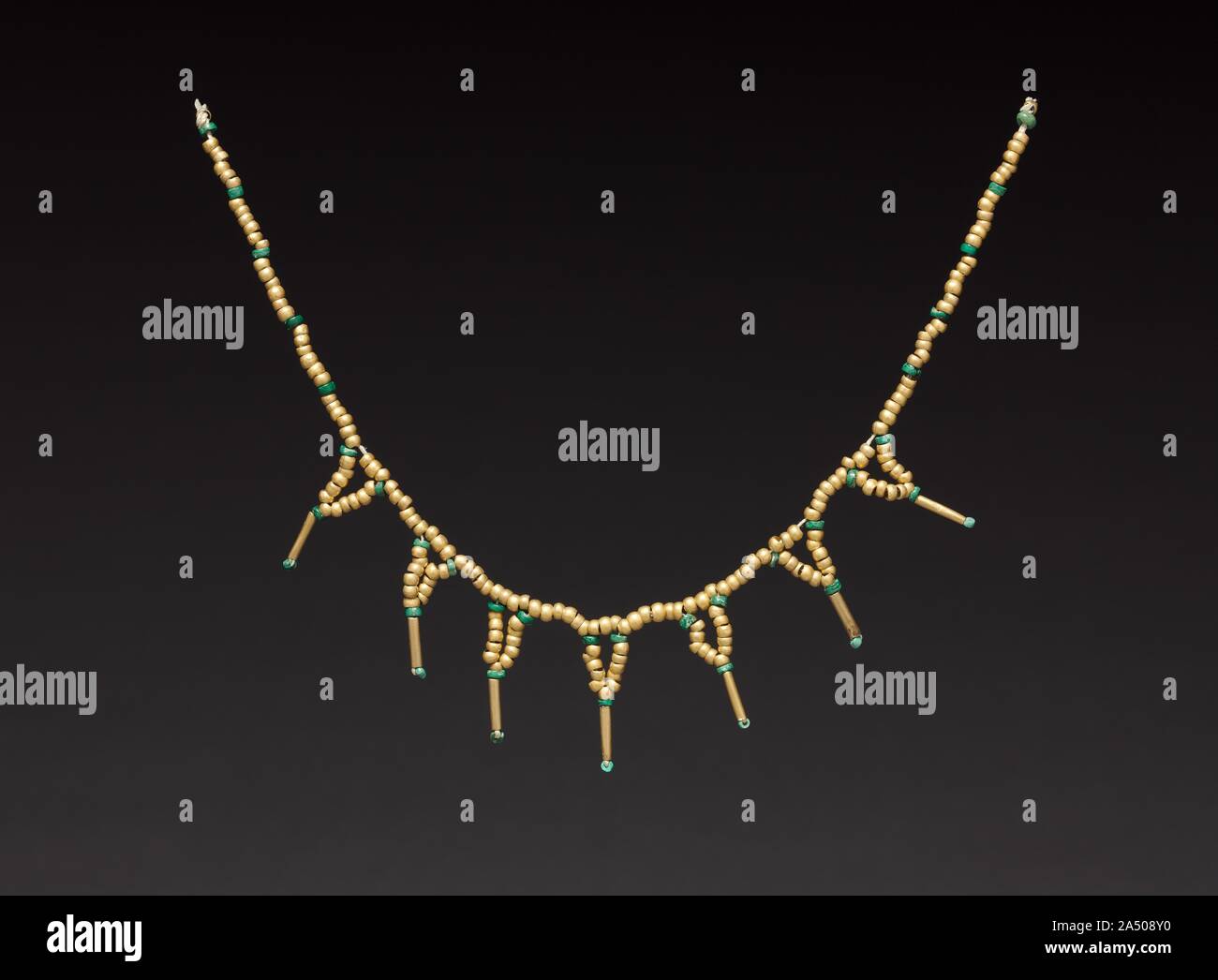 Beads Strung as a Necklace, c. 400-500. Stock Photohttps://www.alamy.com/image-license-details/?v=1https://www.alamy.com/beads-strung-as-a-necklace-c-400-500-image330077300.html
Beads Strung as a Necklace, c. 400-500. Stock Photohttps://www.alamy.com/image-license-details/?v=1https://www.alamy.com/beads-strung-as-a-necklace-c-400-500-image330077300.htmlRM2A508Y0–Beads Strung as a Necklace, c. 400-500.
 Ornament from Sitio Conte: Small Plaque, c. 400-500. Panama, Conte style, 5th - 10th century. Hammered gold; overall: 10.5 x 11.3 cm (4 1/8 x 4 7/16 in.). Harvard archaeologists excavated this and seven other ornaments from several burials at Sitio Conte, a cemetery famous for its lavish graves of powerful chieftains. The young man buried in Grave 26 was such a chief. His status was stunningly memorialized by 21 human companions and 475 objects, many of them personal ornaments made of gold, including this large chest plaque and a rod-shaped ear ornament. The creature on the chest plaque, foun Stock Photohttps://www.alamy.com/image-license-details/?v=1https://www.alamy.com/ornament-from-sitio-conte-small-plaque-c-400-500-panama-conte-style-5th-10th-century-hammered-gold-overall-105-x-113-cm-4-18-x-4-716-in-harvard-archaeologists-excavated-this-and-seven-other-ornaments-from-several-burials-at-sitio-conte-a-cemetery-famous-for-its-lavish-graves-of-powerful-chieftains-the-young-man-buried-in-grave-26-was-such-a-chief-his-status-was-stunningly-memorialized-by-21-human-companions-and-475-objects-many-of-them-personal-ornaments-made-of-gold-including-this-large-chest-plaque-and-a-rod-shaped-ear-ornament-the-creature-on-the-chest-plaque-foun-image448063340.html
Ornament from Sitio Conte: Small Plaque, c. 400-500. Panama, Conte style, 5th - 10th century. Hammered gold; overall: 10.5 x 11.3 cm (4 1/8 x 4 7/16 in.). Harvard archaeologists excavated this and seven other ornaments from several burials at Sitio Conte, a cemetery famous for its lavish graves of powerful chieftains. The young man buried in Grave 26 was such a chief. His status was stunningly memorialized by 21 human companions and 475 objects, many of them personal ornaments made of gold, including this large chest plaque and a rod-shaped ear ornament. The creature on the chest plaque, foun Stock Photohttps://www.alamy.com/image-license-details/?v=1https://www.alamy.com/ornament-from-sitio-conte-small-plaque-c-400-500-panama-conte-style-5th-10th-century-hammered-gold-overall-105-x-113-cm-4-18-x-4-716-in-harvard-archaeologists-excavated-this-and-seven-other-ornaments-from-several-burials-at-sitio-conte-a-cemetery-famous-for-its-lavish-graves-of-powerful-chieftains-the-young-man-buried-in-grave-26-was-such-a-chief-his-status-was-stunningly-memorialized-by-21-human-companions-and-475-objects-many-of-them-personal-ornaments-made-of-gold-including-this-large-chest-plaque-and-a-rod-shaped-ear-ornament-the-creature-on-the-chest-plaque-foun-image448063340.htmlRM2H0Y1A4–Ornament from Sitio Conte: Small Plaque, c. 400-500. Panama, Conte style, 5th - 10th century. Hammered gold; overall: 10.5 x 11.3 cm (4 1/8 x 4 7/16 in.). Harvard archaeologists excavated this and seven other ornaments from several burials at Sitio Conte, a cemetery famous for its lavish graves of powerful chieftains. The young man buried in Grave 26 was such a chief. His status was stunningly memorialized by 21 human companions and 475 objects, many of them personal ornaments made of gold, including this large chest plaque and a rod-shaped ear ornament. The creature on the chest plaque, foun
 Temporary Exhibition of the Cocle Culture in the Penn University Museum. Metallic Pieces found in the Burial 11 of Sitio Conte Panama Stock Photohttps://www.alamy.com/image-license-details/?v=1https://www.alamy.com/temporary-exhibition-of-the-cocle-culture-in-the-penn-university-museum-metallic-pieces-found-in-the-burial-11-of-sitio-conte-panama-image468108110.html
Temporary Exhibition of the Cocle Culture in the Penn University Museum. Metallic Pieces found in the Burial 11 of Sitio Conte Panama Stock Photohttps://www.alamy.com/image-license-details/?v=1https://www.alamy.com/temporary-exhibition-of-the-cocle-culture-in-the-penn-university-museum-metallic-pieces-found-in-the-burial-11-of-sitio-conte-panama-image468108110.htmlRM2J5G4JP–Temporary Exhibition of the Cocle Culture in the Penn University Museum. Metallic Pieces found in the Burial 11 of Sitio Conte Panama
 Double Crocodile Vessel, c. 400-900. Stock Photohttps://www.alamy.com/image-license-details/?v=1https://www.alamy.com/double-crocodile-vessel-c-400-900-image330086340.html
Double Crocodile Vessel, c. 400-900. Stock Photohttps://www.alamy.com/image-license-details/?v=1https://www.alamy.com/double-crocodile-vessel-c-400-900-image330086340.htmlRM2A50MDT–Double Crocodile Vessel, c. 400-900.
 Temporary Exhibition of the Cocle Culture in the Penn University Museum. Close up of the Ceramic found in the Burial 11 of Sitio Conte Panama Stock Photohttps://www.alamy.com/image-license-details/?v=1https://www.alamy.com/temporary-exhibition-of-the-cocle-culture-in-the-penn-university-museum-close-up-of-the-ceramic-found-in-the-burial-11-of-sitio-conte-panama-image468108176.html
Temporary Exhibition of the Cocle Culture in the Penn University Museum. Close up of the Ceramic found in the Burial 11 of Sitio Conte Panama Stock Photohttps://www.alamy.com/image-license-details/?v=1https://www.alamy.com/temporary-exhibition-of-the-cocle-culture-in-the-penn-university-museum-close-up-of-the-ceramic-found-in-the-burial-11-of-sitio-conte-panama-image468108176.htmlRM2J5G4N4–Temporary Exhibition of the Cocle Culture in the Penn University Museum. Close up of the Ceramic found in the Burial 11 of Sitio Conte Panama
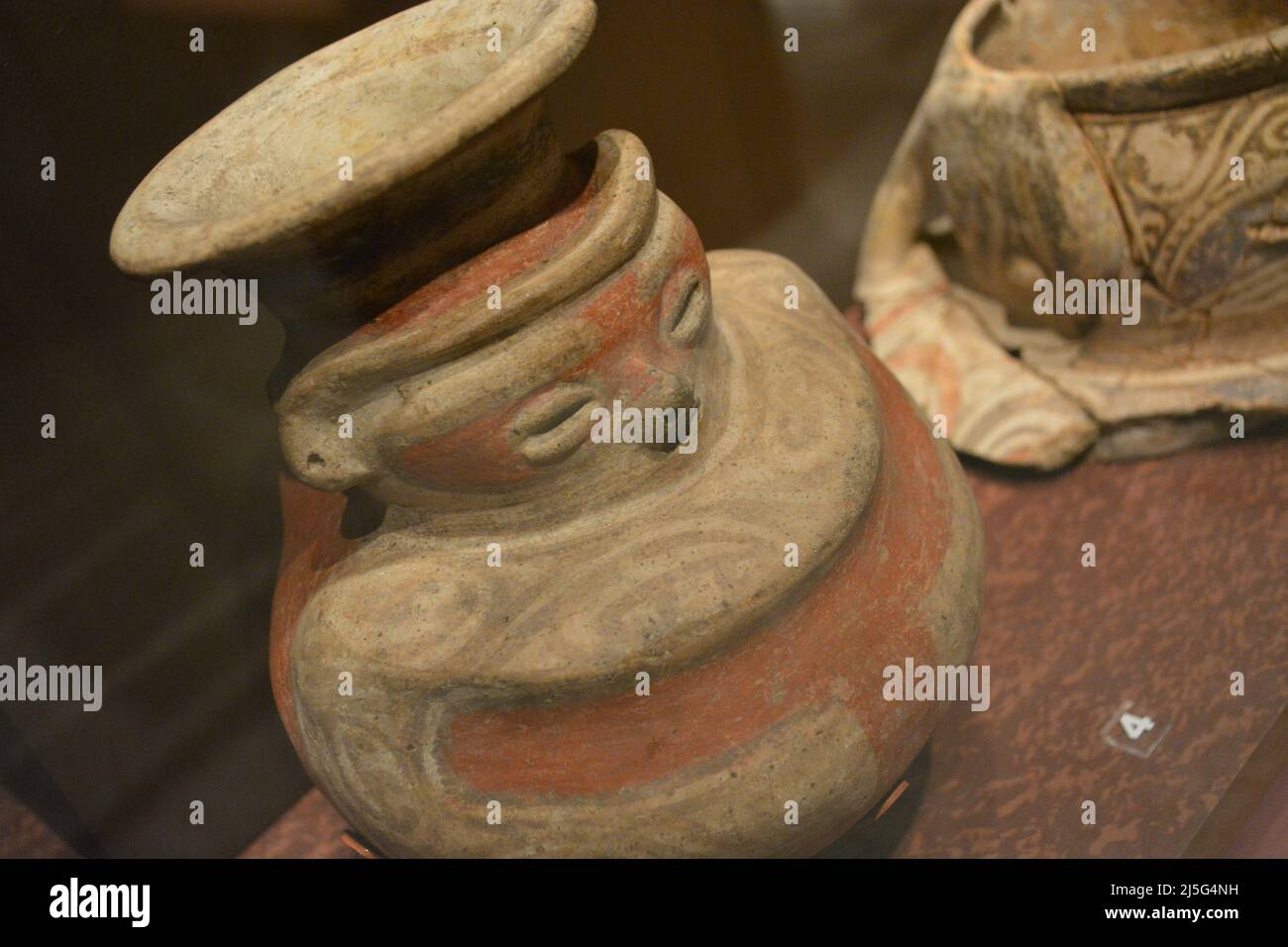 Temporary Exhibition of the Cocle Culture in the Penn University Museum. Ceramic Pieces found in the Burial 11 of Sitio Conte Stock Photohttps://www.alamy.com/image-license-details/?v=1https://www.alamy.com/temporary-exhibition-of-the-cocle-culture-in-the-penn-university-museum-ceramic-pieces-found-in-the-burial-11-of-sitio-conte-image468108189.html
Temporary Exhibition of the Cocle Culture in the Penn University Museum. Ceramic Pieces found in the Burial 11 of Sitio Conte Stock Photohttps://www.alamy.com/image-license-details/?v=1https://www.alamy.com/temporary-exhibition-of-the-cocle-culture-in-the-penn-university-museum-ceramic-pieces-found-in-the-burial-11-of-sitio-conte-image468108189.htmlRM2J5G4NH–Temporary Exhibition of the Cocle Culture in the Penn University Museum. Ceramic Pieces found in the Burial 11 of Sitio Conte
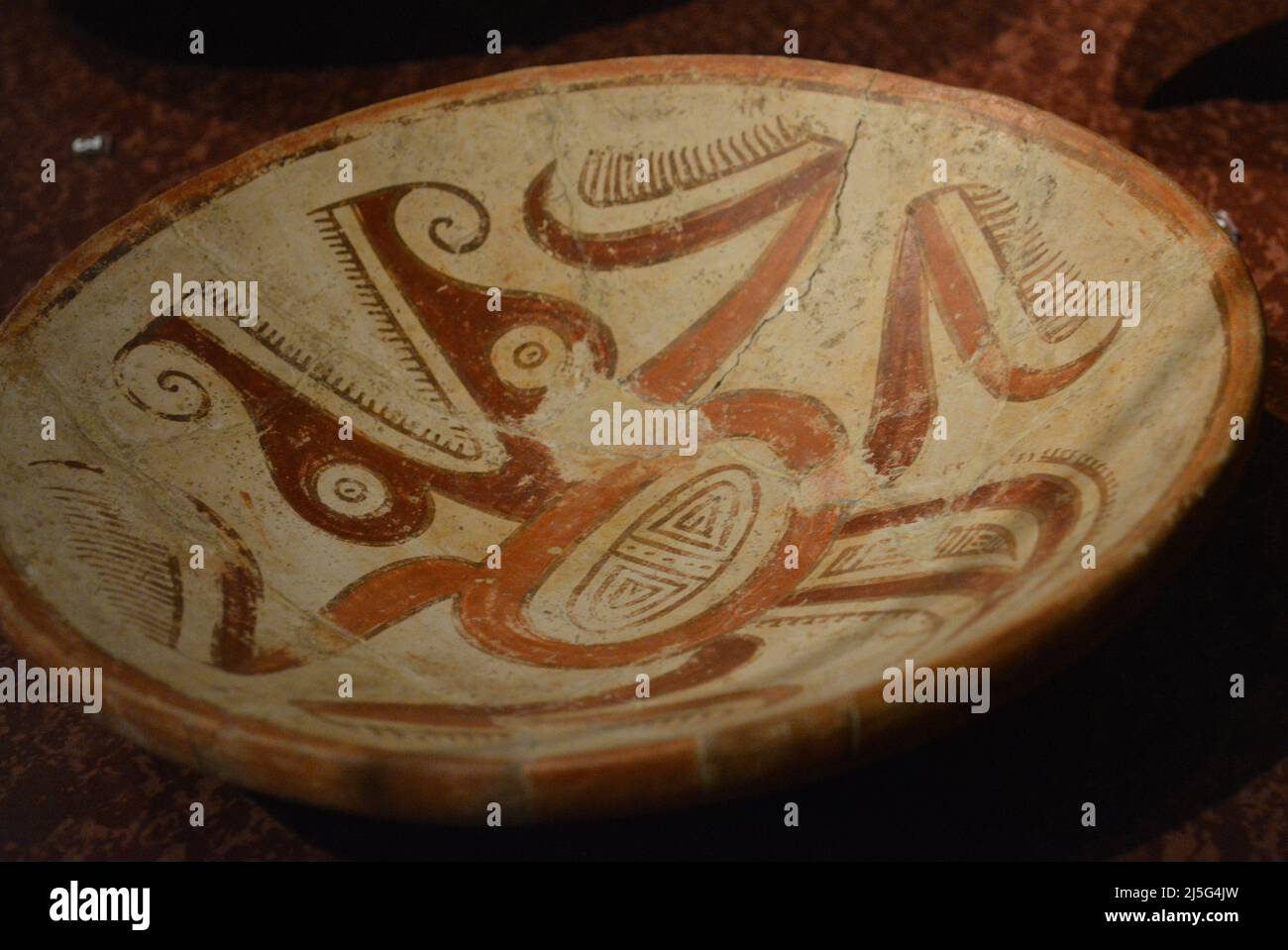 Temporary Exhibition of the Cocle Culture in the Penn University Museum. Ceramic Bowl found in the Burial 11 of Sitio Conte Stock Photohttps://www.alamy.com/image-license-details/?v=1https://www.alamy.com/temporary-exhibition-of-the-cocle-culture-in-the-penn-university-museum-ceramic-bowl-found-in-the-burial-11-of-sitio-conte-image468108113.html
Temporary Exhibition of the Cocle Culture in the Penn University Museum. Ceramic Bowl found in the Burial 11 of Sitio Conte Stock Photohttps://www.alamy.com/image-license-details/?v=1https://www.alamy.com/temporary-exhibition-of-the-cocle-culture-in-the-penn-university-museum-ceramic-bowl-found-in-the-burial-11-of-sitio-conte-image468108113.htmlRM2J5G4JW–Temporary Exhibition of the Cocle Culture in the Penn University Museum. Ceramic Bowl found in the Burial 11 of Sitio Conte
 Temporary Exhibition of the Cocle Culture in the Penn University Museum. Pieces found in the Burial 11 of Sitio Conte Stock Photohttps://www.alamy.com/image-license-details/?v=1https://www.alamy.com/temporary-exhibition-of-the-cocle-culture-in-the-penn-university-museum-pieces-found-in-the-burial-11-of-sitio-conte-image468108168.html
Temporary Exhibition of the Cocle Culture in the Penn University Museum. Pieces found in the Burial 11 of Sitio Conte Stock Photohttps://www.alamy.com/image-license-details/?v=1https://www.alamy.com/temporary-exhibition-of-the-cocle-culture-in-the-penn-university-museum-pieces-found-in-the-burial-11-of-sitio-conte-image468108168.htmlRM2J5G4MT–Temporary Exhibition of the Cocle Culture in the Penn University Museum. Pieces found in the Burial 11 of Sitio Conte
 Temporary Exhibition of the Cocle Culture in the Penn University Museum. Ceramic found in the Burial 11 of Sitio Conte Stock Photohttps://www.alamy.com/image-license-details/?v=1https://www.alamy.com/temporary-exhibition-of-the-cocle-culture-in-the-penn-university-museum-ceramic-found-in-the-burial-11-of-sitio-conte-image468108171.html
Temporary Exhibition of the Cocle Culture in the Penn University Museum. Ceramic found in the Burial 11 of Sitio Conte Stock Photohttps://www.alamy.com/image-license-details/?v=1https://www.alamy.com/temporary-exhibition-of-the-cocle-culture-in-the-penn-university-museum-ceramic-found-in-the-burial-11-of-sitio-conte-image468108171.htmlRM2J5G4MY–Temporary Exhibition of the Cocle Culture in the Penn University Museum. Ceramic found in the Burial 11 of Sitio Conte